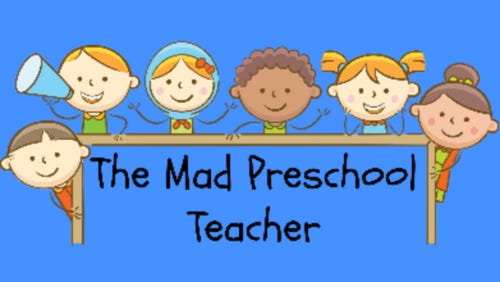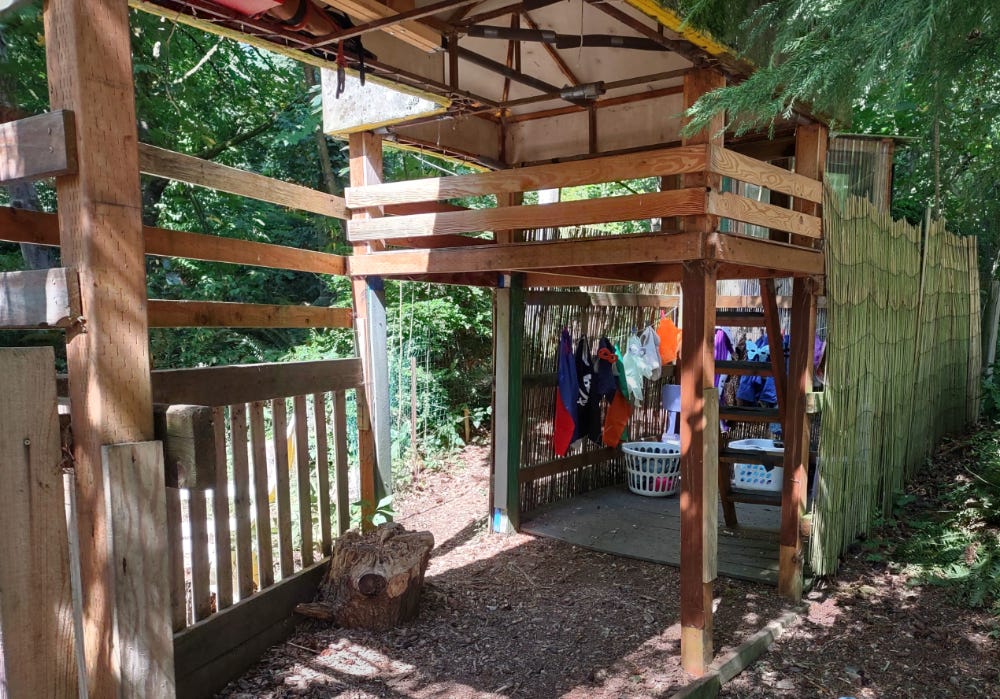Summer is here and along with the time off, one of the things I cherish most about this season is summer camp. But not just any camp. My camp. A one month gathering that feels more like a reunion than a program. A place where past and present preschoolers return—not just for play, but for something deeper. For many of them, it’s the highlight of their year. And while it isn’t open to the public (despite frequent pleas and requests), it’s a full house every time. I barely have enough room for all the returning kids.
This camp is a return to roots, a retreat into a familiar space where you’re known deeply and accepted fully. That’s something increasingly rare in children’s lives. When I first began these camps, partly out of necessity because I couldn’t afford not to, I offered it to kids ages 4 to 9. I figured that was the sweet spot for outdoor theater, nature adventures, and free-form play.
But almost immediately, the older kids started asking to come back. Parents would reach out and say, “This is what my child wants to do most this summer.” High praise, yes—but also a subtle signal of something deeper: childhood seems to be shrinking. Kids are feeling the pressure to grow up faster and faster, and what they’re missing is the kind of space where they can just be.
When the older kids return, the first day is always the same in the best way. I sit and listen. They talk. About school. About the hard teachers, the unexpected drama, the things that hurt and the things they’re proud of. Sometimes, they share vulnerable family stories, the kind that catch me off guard in their depth and honesty. All I can do is listen, love, and be a steady presence.
It’s heartbreaking and beautiful at the same time what some of these kids are carrying, and how instinctively they trust this space as somewhere they can lay it down.
What they’re drawn to is more than just fun or freedom. It’s the feeling of being held by a container that knows them. A place where they aren’t expected to change, perform, or prove themselves. I can almost hear it when they arrive: a collective breath of relief. They’re home.
In many ways, I’ve been following that same pull in my own life—the deep, often unspoken longing to belong somewhere fully, without having to explain or edit myself. That longing sustained me during years of inner struggle and now forms the foundation of my healing: a commitment to show up as all of me, and to build the kind of community where that’s possible. Just like the kids, I’m learning what it means to come home.
For these older kids something new is emerging, as well. They’re not just here to play. They’re here to serve. To help with the younger kids. I don’t even have to ask. Something internal is being satisfied—something that doesn’t get nourished enough in the competitive, single-age classrooms they’ve spent the last nine months in.
That impulse to serve and to give from a place of lived experience is alive in me, too. It’s become a vital thread in my own journey of healing: this growing sense that what I’ve walked through has value, and that I now have something real to offer because of it. Similar to the older kids, I’ve discovered a quiet joy in turning my struggle and growth into something purposeful — something vital to my current health.
So with our container set it was time to let the fun begin! But No one was asking, “What are we doing today?” Instead, I’m asking, “What are you feeling inspired to do?” That’s the difference. I’m here to hold the container you all know and love. It’s up to you to create the magic.
This past week, I had sixteen kids, ranging in age from four to twelve. The older ones essentially ran the show. Central to our space is our outdoor theater, a stage where anything is possible. You might even find me there, changing my identity mid-scene to help carry the story. I do a lot less “teaching” in the traditional sense—but a whole lot of participating. That’s where the real teaching happens anyway.
My Wise Fool archetype gets to come alive here—helping, guiding, playing, but never controlling. This is a space where teaching happens through co-creation, where connection deepens through make-believe, and where the health of the community grows through shared laughter.
Maybe that’s another reason the kids keep coming back: I know how to enter their imaginary worlds in a way that respects their logic and creative needs with one eye on the deeper lessons available within these realms. Partly a gift born from my own lived experiences—ones that were once pathologized and labeled as bipolar. But here, in this playful space, I’m not stuck in a disease model. My transformation is front and center. Instead, I’m feeling a deep sense of purpose and appreciation for the very sensitivities that once made me feel broken, scared, and alone.
Yesterday, the older kids came in with a plan: they were going to create an epic performance for the younger ones. No one asked them to. It was all their idea. And the younger kids? They didn’t want to do anything else but find a spot in the shade and watch.
It took all day just to plan it and the actual performance didn’t happen until the day after. But the process was the show.
The younger ones sat mesmerized, soaking in every moment of group collaboration—watching their big-kid heroes brainstorm, disagree, adapt, laugh, and problem-solve. It was a masterclass in how to be in community. They learned about compromise, patience, creative expression, and how to move through conflict without losing connection. Lessons that no curriculum can fully teach. Lessons a lot of us adults could use!!
This is the kind of magic that unfolds when we stop over-structuring our children’s time. When we resist the pressure to constantly prepare them for the “real world” and instead give them space to imagine and explore. Yes, idle time can be risky—kids might get bored and create a little trouble. But it’s also the fertile soil for creativity, emotional development, and group cohesion. A little trouble isn’t a bad thing depending on how we relate to it as adults.
When children are given the chance to unwind with their imagination together, guided just enough, something beautiful happens. They remember who they are. And we, the adults lucky enough to witness it, remember too.
So here’s to the return—to camp, to community, to ourselves.
Much Love!
The Mad Preschool Teacher (He/Him)



